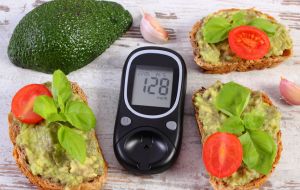Soy-Free Diet

Best Bets
Many soy-free alternatives to meat are available today. The Internet is a good place to get recipes and learn how to cook with these foods. Some helpful resources are listed below.
Vegetable and grain alternatives:
Some manufactured vegetarian products, such as “veggie” burgers, are made with vegetables and grains instead of soy protein. However, it is important to read labels to be sure no soy has been added to the product. These products may contain any combination of vegetables and grains, such as oats, rice, wheat, chickpeas, mushrooms, potatoes, corn, lima beans, green beans, peas, carrots, nuts, and others.
Gluten and seitan:
Wheat gluten is made when wheat flour is mixed with water and kneaded, and then is processed to remove the starch and bran. The result is a high-protein, low-fat food. Wheat gluten and seitan (a form of wheat gluten) can be used in sandwiches, soups, and stir frys, as “steaks,” and as a meat replacement in many other dishes. These products can be found in the refrigerated section of most health food stores, near the tofu.
Soy-free milk:
If you are not a vegan, allergic to milk protein, or lactose intolerant, cow’s milk is always an option. Low-lactose whey milk may be suitable for some lactose-intolerant individuals, but not for those with allergies. Some people are allergic to both soy and cow’s milk protein. Rice milk and almond milk are two dairy-free /soy-free milk alternatives.
Foods to Avoid
To avoid soy and soy products ask about ingredients at restaurants and others’ homes, read food labels, and become familiar with the technical or scientific terms for soy. The following list is not complete. Consult with a healthcare professional before making any significant changes to your diet.
- Green soybeans (edamame)
- Hydrolyzed vegetable protein (HVP)
- Infant formulas, soy-based
- Lecithin (extracted from soy oil, though safe for a majority of soy-allergic people)
- Meat alternatives (meat analogs)
- Miso
- Natto
- Non-dairy soy frozen dessert
- Oyster sauce (most brands contain soy protein)
- Soy cheese
- Soy fiber
- Okara
- Soy bran
- Soy isolate fiber (also known as structured protein fiber [SPF])
- Soy flour (used in most muffins, some doughnuts, many breads, and other bakery goods)
- Soy grits
- Soy protein concentrate
- Soy protein isolates (isolated soy protein)
- Soy protein, textured
- Textured soy flour (TSF)
- Textured vegetable protein (TVP)
- Tuna (canned, “packed in water”—read the fine print: most contain vegetable broth, which is made from soybeans)
- Soy sauce (tamari, shoyu, teriyaki sauce)
- Soy yogurt
- Soy beans, whole
- Soy milk and beverages
- Soy nut butter
- Soy nuts
- Soy oil (though safe for a majority of soy-allergic people)
- Sprouts, soy
- Tempeh
- Tofu and tofu products
- Vegetable broth (frequently contains hydrolyzed vegetable protein from soy)
- Whipped toppings, soy-based
- Yuba
Copyright © 2026 TraceGains, Inc. All rights reserved.
Learn more about TraceGains, the company.
The information presented by TraceGains is for informational purposes only. It is based on scientific studies (human, animal, or in vitro), clinical experience, or traditional usage as cited in each article. The results reported may not necessarily occur in all individuals. Self-treatment is not recommended for life-threatening conditions that require medical treatment under a doctor's care. For many of the conditions discussed, treatment with prescription or over the counter medication is also available. Consult your doctor, practitioner, and/or pharmacist for any health problem and before using any supplements or before making any changes in prescribed medications. Information expires December 2026.














